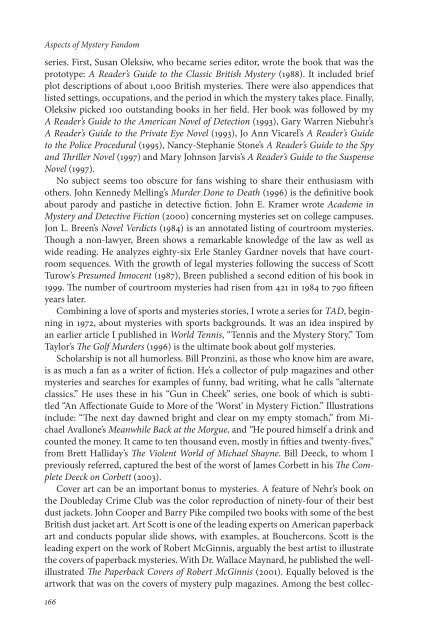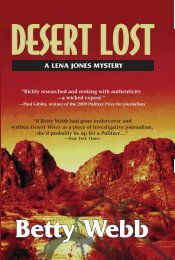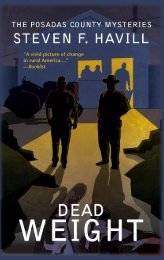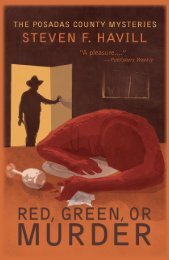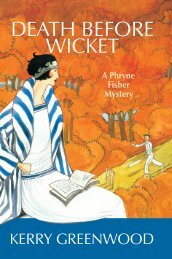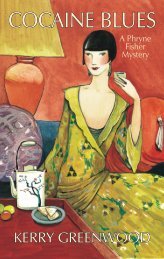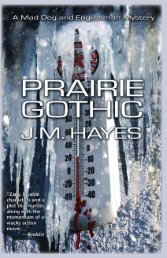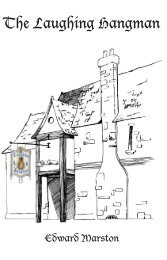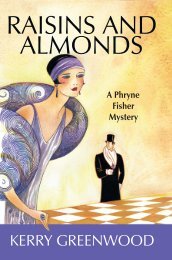The Heirs of Anthony Boucher Marvin Lachman
The Heirs of Anthony Boucher Marvin Lachman
The Heirs of Anthony Boucher Marvin Lachman
Create successful ePaper yourself
Turn your PDF publications into a flip-book with our unique Google optimized e-Paper software.
Aspects <strong>of</strong> Mystery Fandom<br />
series. First, Susan Oleksiw, who became series editor, wrote the book that was the<br />
prototype: A Reader’s Guide to the Classic British Mystery (1988). It included brief<br />
plot descriptions <strong>of</strong> about 1,000 British mysteries. <strong>The</strong>re were also appendices that<br />
listed settings, occupations, and the period in which the mystery takes place. Finally,<br />
Oleksiw picked 100 outstanding books in her field. Her book was followed by my<br />
A Reader’s Guide to the American Novel <strong>of</strong> Detection (1993), Gary Warren Niebuhr’s<br />
A Reader’s Guide to the Private Eye Novel (1993), Jo Ann Vicarel’s A Reader’s Guide<br />
to the Police Procedural (1995), Nancy-Stephanie Stone’s A Reader’s Guide to the Spy<br />
and Thriller Novel (1997) and Mary Johnson Jarvis’s A Reader’s Guide to the Suspense<br />
Novel (1997).<br />
No subject seems too obscure for fans wishing to share their enthusiasm with<br />
others. John Kennedy Melling’s Murder Done to Death (1996) is the definitive book<br />
about parody and pastiche in detective fiction. John E. Kramer wrote Academe in<br />
Mystery and Detective Fiction (2000) concerning mysteries set on college campuses.<br />
Jon L. Breen’s Novel Verdicts (1984) is an annotated listing <strong>of</strong> courtroom mysteries.<br />
Though a non-lawyer, Breen shows a remarkable knowledge <strong>of</strong> the law as well as<br />
wide reading. He analyzes eighty-six Erle Stanley Gardner novels that have courtroom<br />
sequences. With the growth <strong>of</strong> legal mysteries following the success <strong>of</strong> Scott<br />
Turow’s Presumed Innocent (1987), Breen published a second edition <strong>of</strong> his book in<br />
1999. <strong>The</strong> number <strong>of</strong> courtroom mysteries had risen from 421 in 1984 to 790 fifteen<br />
years later.<br />
Combining a love <strong>of</strong> sports and mysteries stories, I wrote a series for TAD, beginning<br />
in 1972, about mysteries with sports backgrounds. It was an idea inspired by<br />
an earlier article I published in World Tennis, “Tennis and the Mystery Story.” Tom<br />
Taylor’s <strong>The</strong> Golf Murders (1996) is the ultimate book about golf mysteries.<br />
Scholarship is not all humorless. Bill Pronzini, as those who know him are aware,<br />
is as much a fan as a writer <strong>of</strong> fiction. He’s a collector <strong>of</strong> pulp magazines and other<br />
mysteries and searches for examples <strong>of</strong> funny, bad writing, what he calls “alternate<br />
classics.” He uses these in his “Gun in Cheek” series, one book <strong>of</strong> which is subtitled<br />
“An Affectionate Guide to More <strong>of</strong> the ‘Worst’ in Mystery Fiction.” Illustrations<br />
include: “<strong>The</strong> next day dawned bright and clear on my empty stomach,” from Michael<br />
Avallone’s Meanwhile Back at the Morgue, and “He poured himself a drink and<br />
counted the money. It came to ten thousand even, mostly in fifties and twenty-fives,”<br />
from Brett Halliday’s <strong>The</strong> Violent World <strong>of</strong> Michael Shayne. Bill Deeck, to whom I<br />
previously referred, captured the best <strong>of</strong> the worst <strong>of</strong> James Corbett in his <strong>The</strong> Complete<br />
Deeck on Corbett (2003).<br />
Cover art can be an important bonus to mysteries. A feature <strong>of</strong> Nehr’s book on<br />
the Doubleday Crime Club was the color reproduction <strong>of</strong> ninety-four <strong>of</strong> their best<br />
dust jackets. John Cooper and Barry Pike compiled two books with some <strong>of</strong> the best<br />
British dust jacket art. Art Scott is one <strong>of</strong> the leading experts on American paperback<br />
art and conducts popular slide shows, with examples, at <strong>Boucher</strong>cons. Scott is the<br />
leading expert on the work <strong>of</strong> Robert McGinnis, arguably the best artist to illustrate<br />
the covers <strong>of</strong> paperback mysteries. With Dr. Wallace Maynard, he published the wellillustrated<br />
<strong>The</strong> Paperback Covers <strong>of</strong> Robert McGinnis (2001). Equally beloved is the<br />
artwork that was on the covers <strong>of</strong> mystery pulp magazines. Among the best collec-<br />
166


